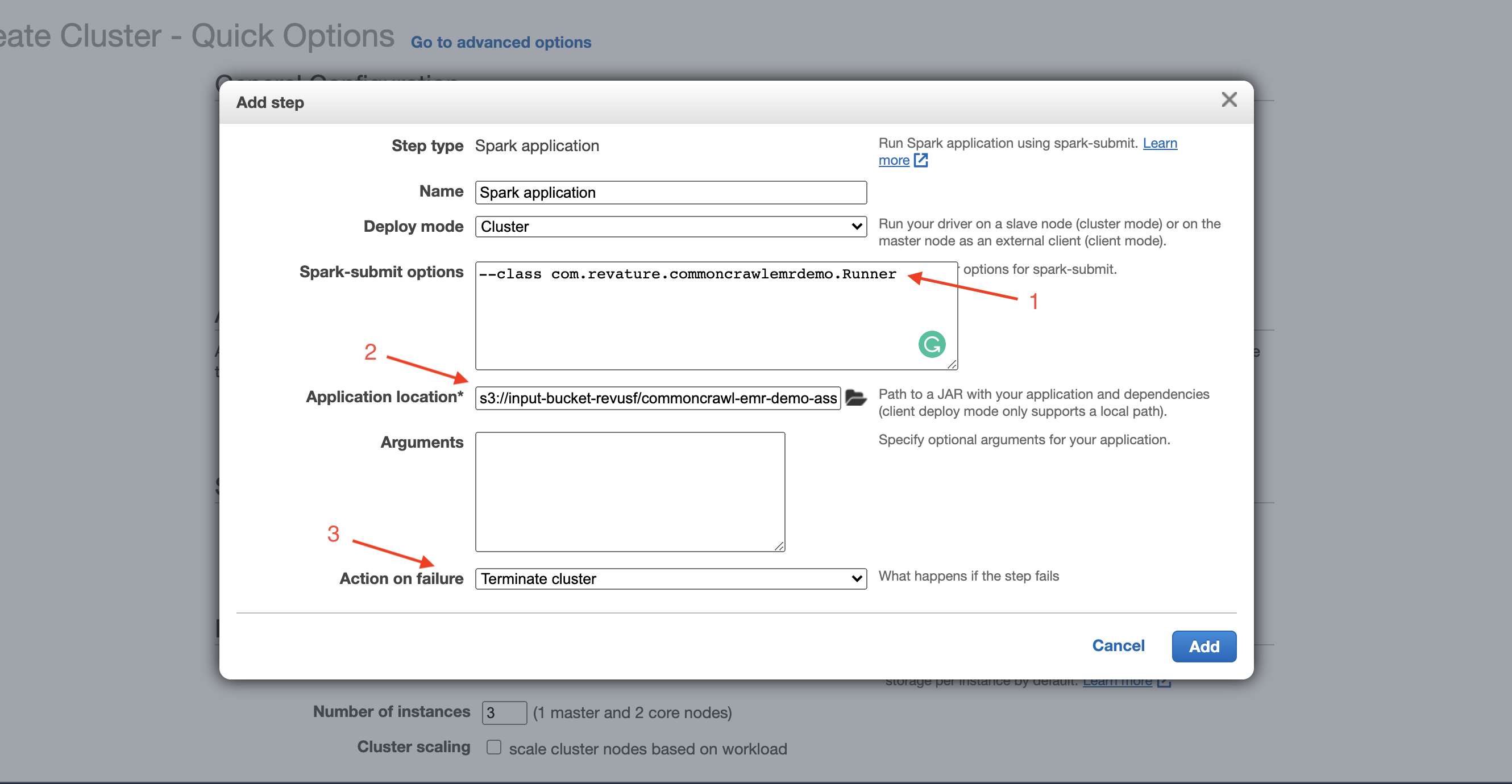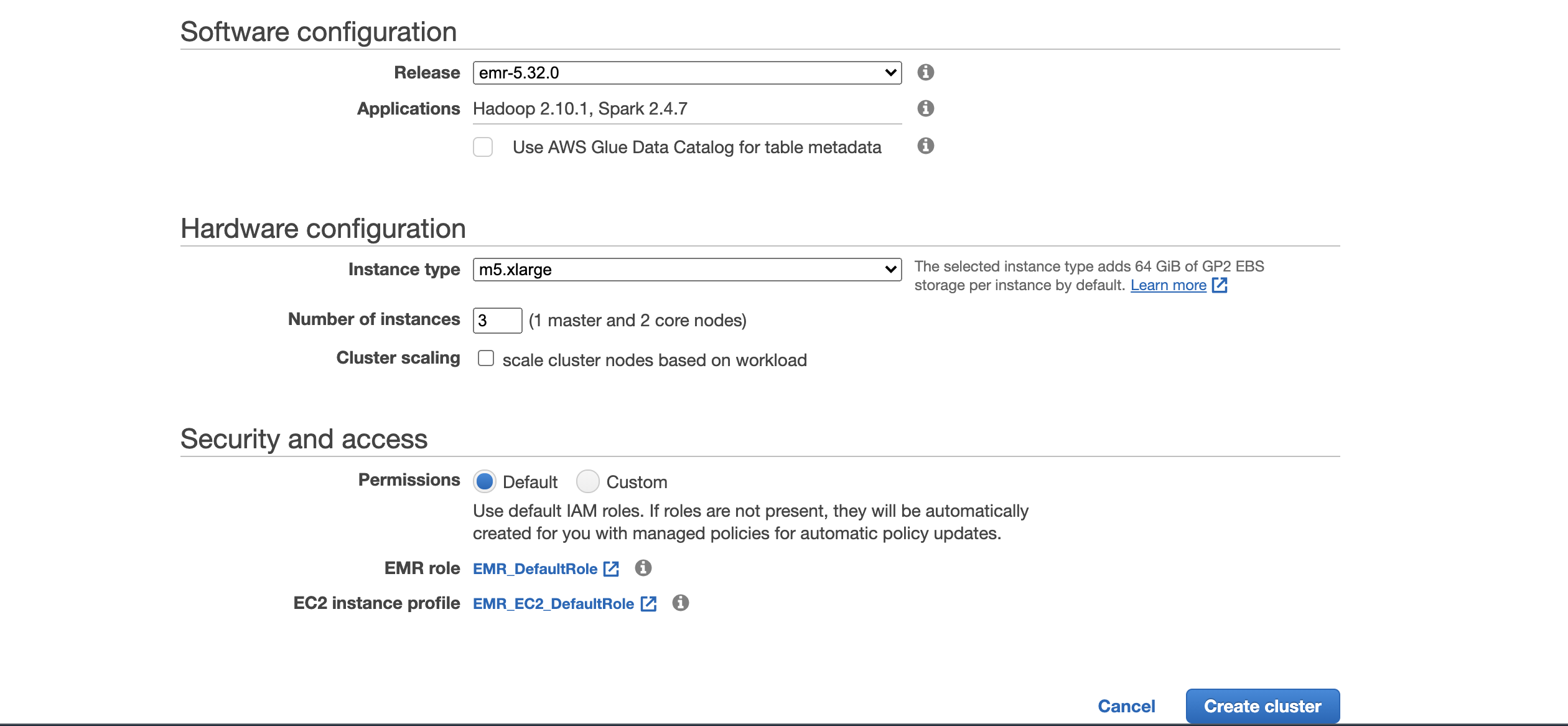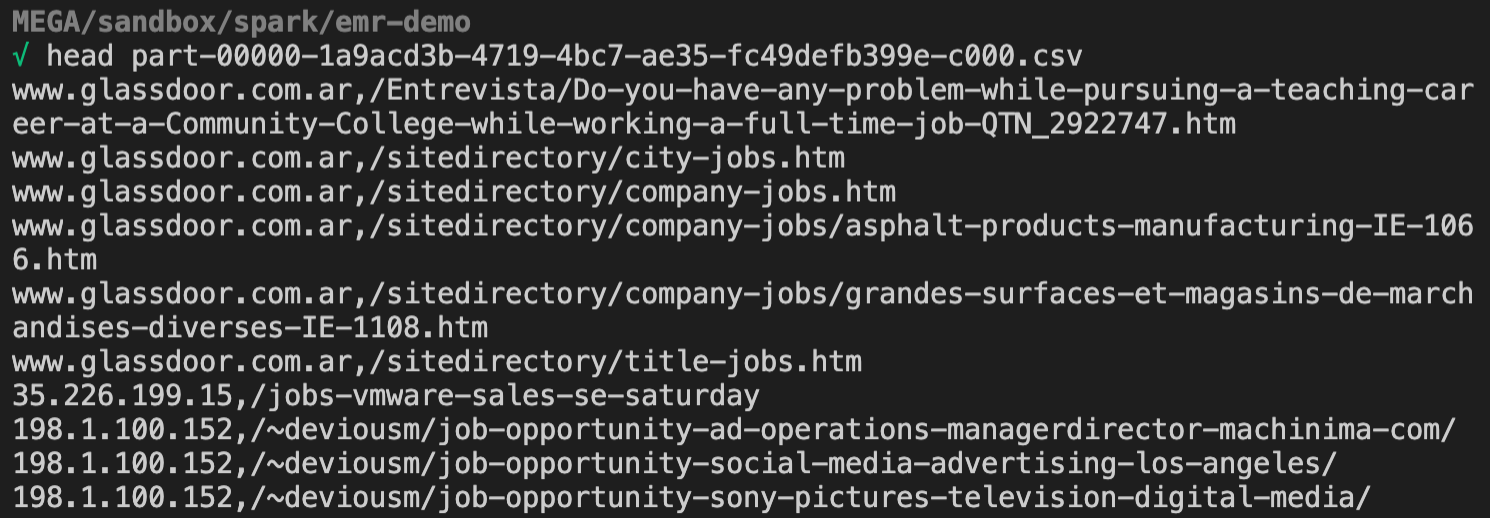EMR Tutorial
This guide walks you through submitting a Scala Spark application to EMR that queries 500k job urls from Common Crawl and saves the results to an S3 bucket in CSV format.
Running the application on EMR will cost about 50 cents.
Prerequisites
This isn't required, but I highly reccomend this 6 minute intro to EMR. It's the simplest EMR hello world you could ask for:
https://www.youtube.com/watch?v=gOT7El8rMws&ab_channel=JohnnyChivers
S3 Setup
Create two new S3 buckets. The first will used be to upload your Spark application jar file. The second will store the output data produced by your application. I'll refer to these as your "input" and "output" buckets.
I named my two buckets input-bucket-revusf and output-bucket-revusf
s3cmd mb s3://input-bucket-revusf
s3cmd mb s3://output-bucket-revusfI use s3cmd for throughout this guide, but feel free to use AWS-cli or the S3 console.
Clone the Repo
We're going to build our application jar locally then submit it to EMR.
To start, let's clone the repo:
git clone https://github.com/haydenhw/commoncrawl-emr-tutorialcd commoncrawl-emr-tutorialUpdate the output bucket name
You'll need to modifiy one line of the application Runner to tell Spark where to find the "output" bucket you created earlier:
src/main/scala/com/revature/commoncrawlemrdemo/Runner.scala
Replace YOUR-BUCKET-NAME with the name of your output bucket at the line shown below.
Since I named my output bucket output-bucket-revusf the string would become "s3a://output-bucket-revusf/commoncrawl-demo-data"
When the application runs it will create a folder inside your bucket called commoncrawl-demo-data and store the results there.
Create a jar file
Now simply build the application as usual with sbt assembly:
sbt assembly
Note: If you try to run this locally it will fail. I've ommitted the dependencies needed to connect to S3 locally to minimize the size of the jar file
Upload the jar file
Once sbt assembly completes we need to upload our jar file to the "input" bucket we created earlier in S3.
s3cmd put target/scala-2.11/commoncrawl-emr-demo-assembly-0.1.0-SNAPSHOT.jar s3://input-bucket-revusfNote: If you're uploading your jar file using the S3 console and it's taking a long time, try a CLI tool instead. I've found that to be much faster
Create an EMR Cluster
Now open the AWS EMR conosole in your browser and click the Create cluster button
Name Cluster and set Launch Mode
- Give your cluster a name
- Select the Step execution option for Launch mode
Step execution will automatically terminate the cluster after our application completes. This is nice beacause we won't need to worry about accidentally leaving the cluster running and racking up charges when we aren't using it.
Set Step type and Configure
1.Select Spark application for Step type 2.Click Configure
Spark application configuration
- For Spark-submit options provide the path to your Runner class:
--class com.revature.commoncrawlemrdemo.Runner - Here we need to tell EMR where to find our jar file on S3. Click the folder icon then locate and select the jar file you uploaded earlier.
- Select Terminate cluster for Action on failure
Finish Cluster Creation
Leave the rest of the settings as default and click the Create cluster button
Monitor your application
Open the Steps tab
At first the application status will show Pending. After 5-10 minutes it will change to Running
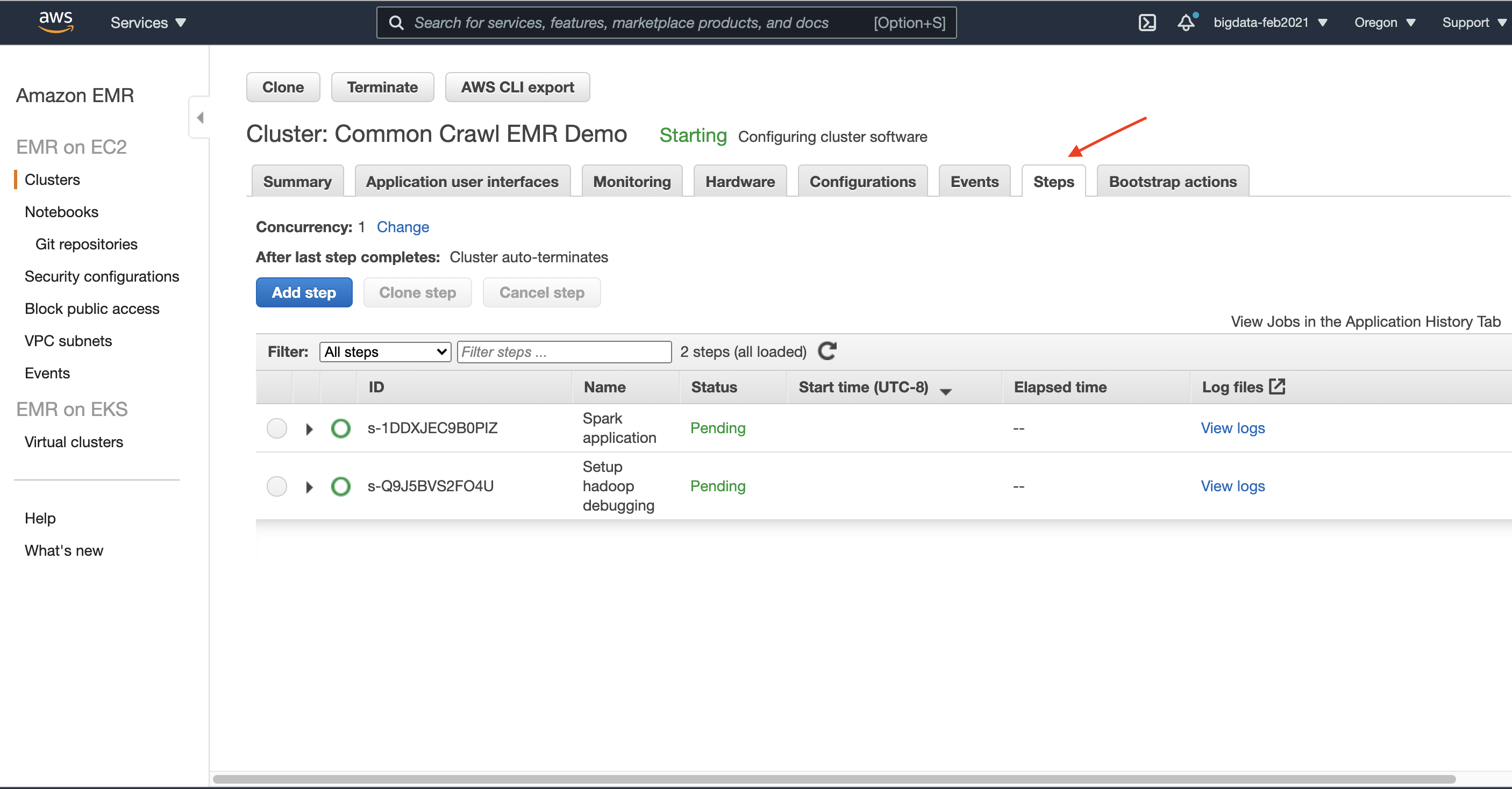
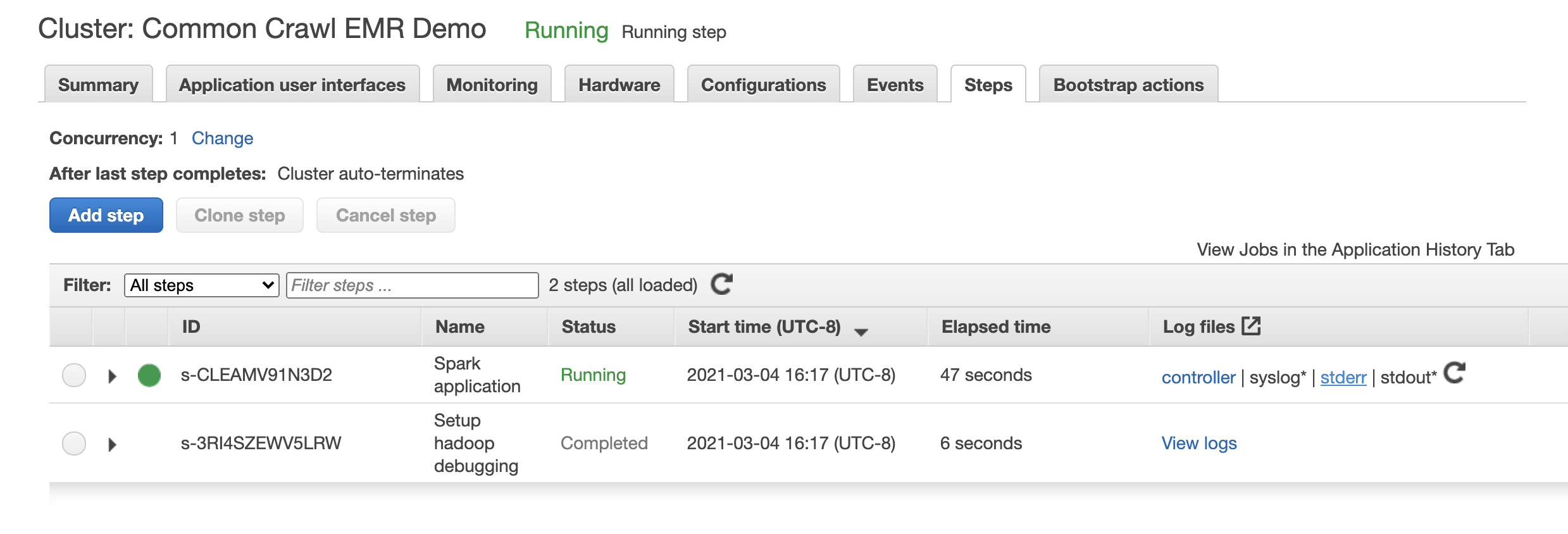 If a job you submit ever fails, click the stderr link to see debug logs.
If a job you submit ever fails, click the stderr link to see debug logs.
Check on your application progress
Once the application is in a Running status you can monitor progress in the Spark history server.
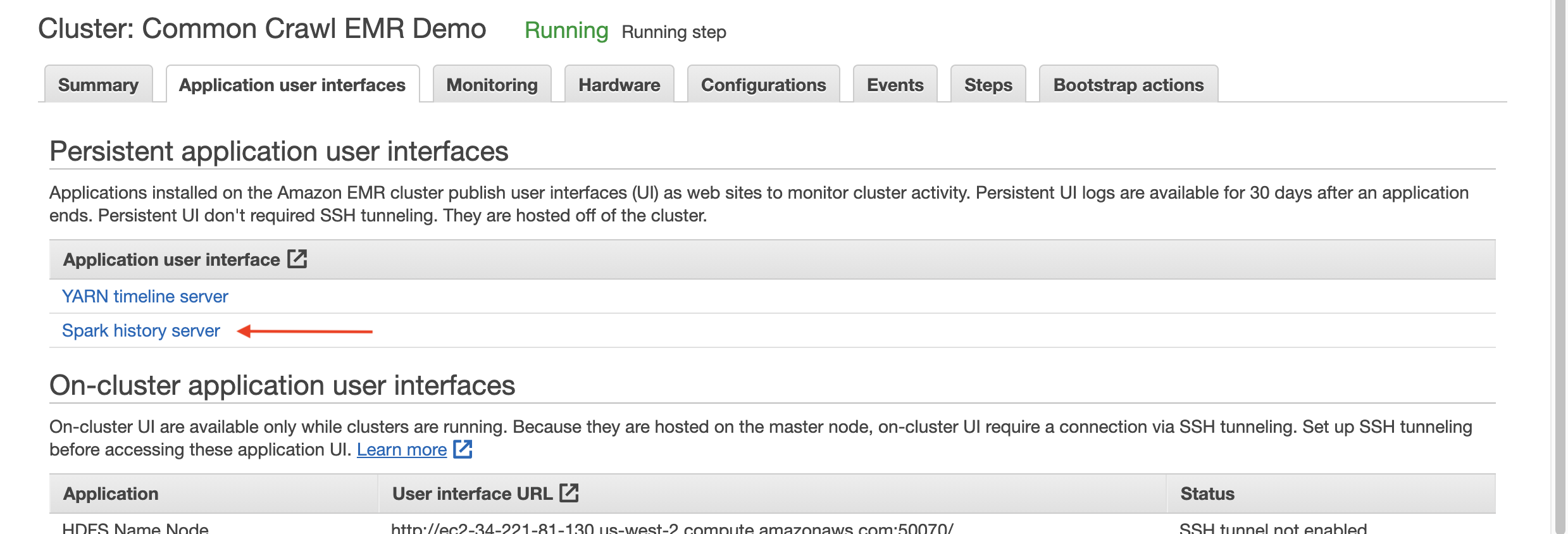
Download your output data
As you can see the job took 38 minutes to complete. This is about on par with other similar queries I've run on the columnar index.
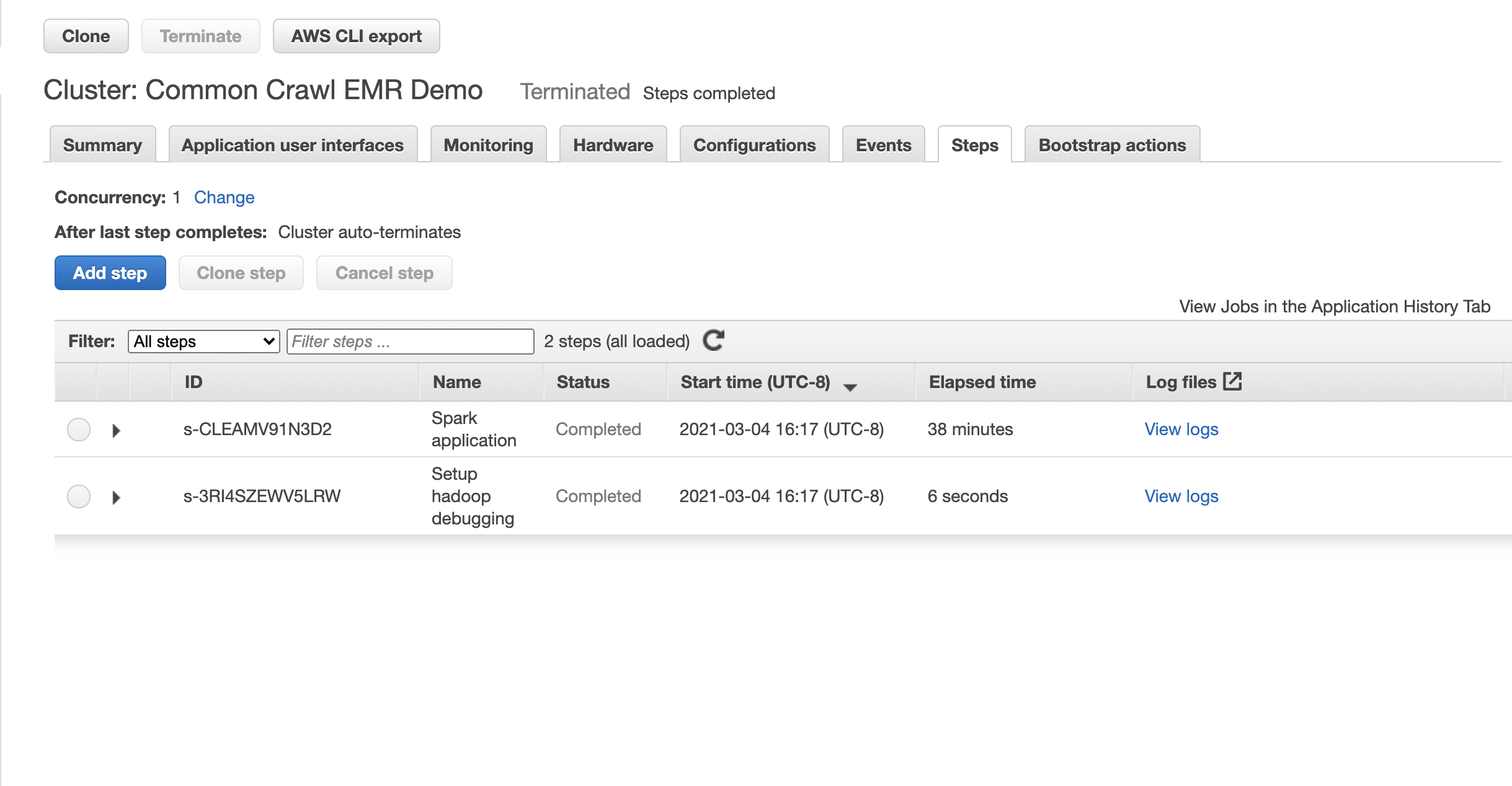
After the job is finished, your ouput bucket should be populated with a nice CSV file packed full of job URLS





